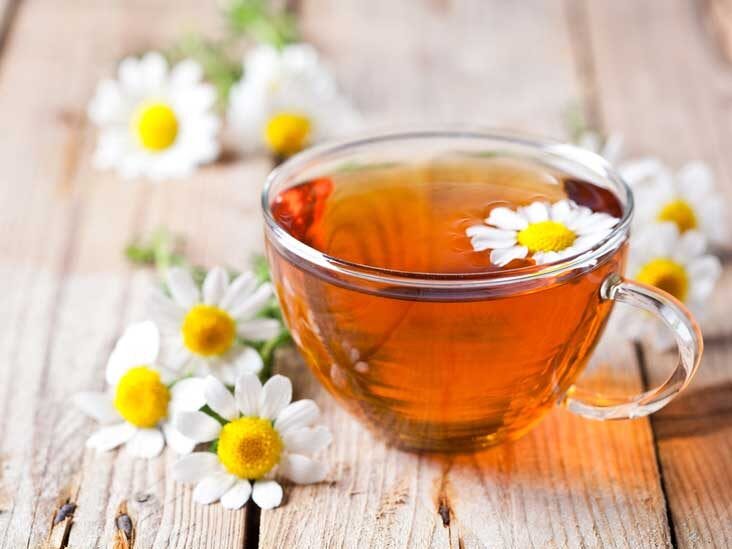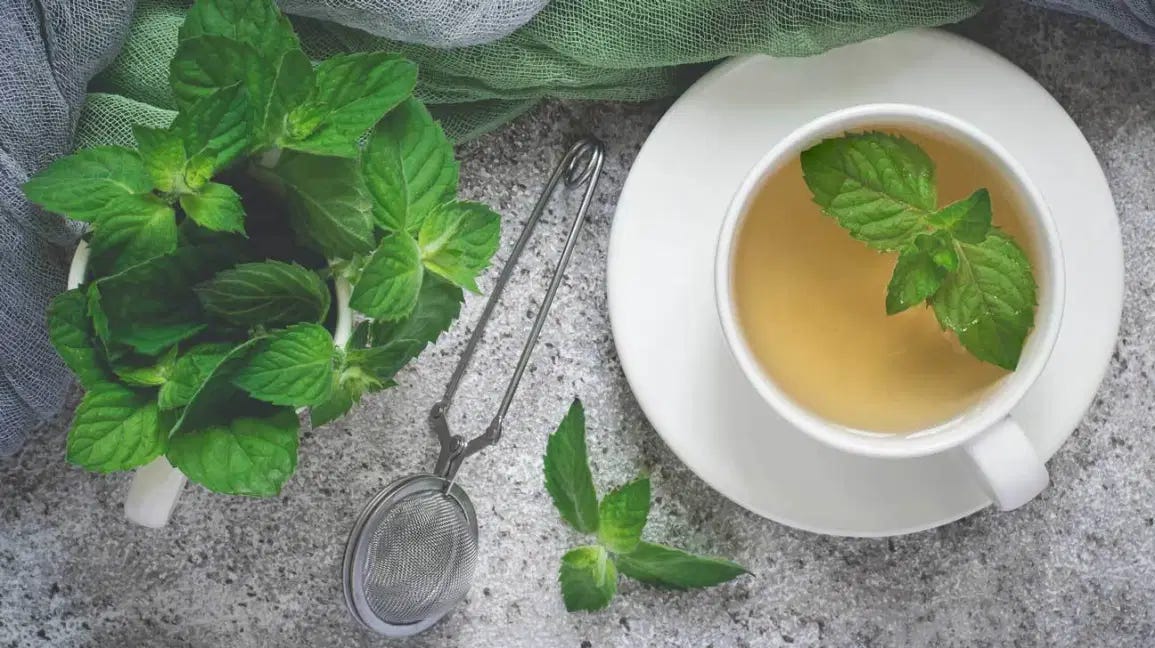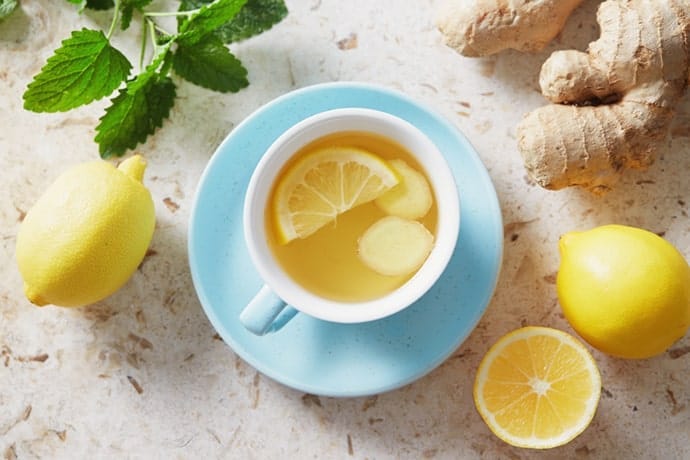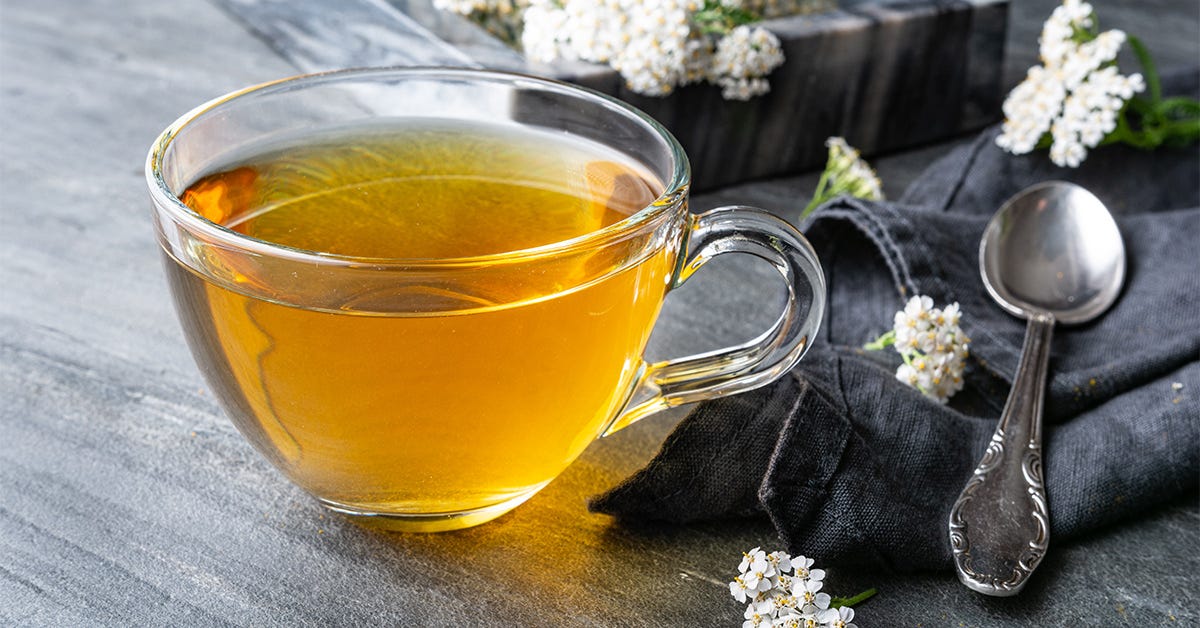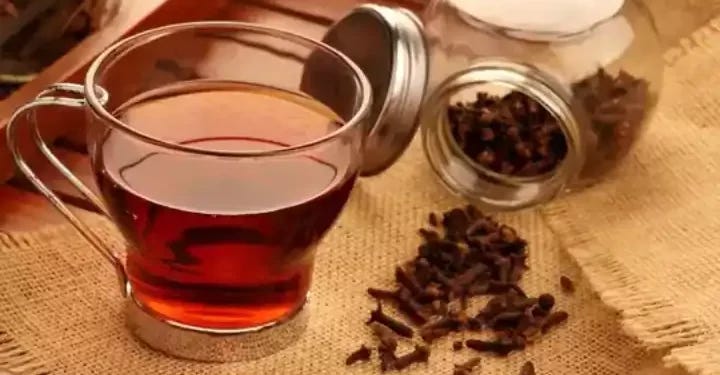Since the 1950s, immunologists have been on the hunt for a cure for the common cold.
Well, they haven’t been successful because its leading cause is a group of viruses classified as rhinoviruses.
A number of rhinovirus strains circulate in the body of a person infected with a cold, and the lack of a cure is attributed to the difficulty in creating a pharmacologic agent that targets all these strains at once.
Nevertheless, tea has always been an unrivaled natural remedy for alleviating the symptoms of colds in a pleasant way.
Besides the general health benefits of herbal teas, we’ll focus today on their ability to soothe and/or abate common cold symptoms.
BEST HERBAL TEAS TO DRINK WHEN YOU HAVE A COLD
1. CHAMOMILE
Chamomile is certainly one of the most popular herbs with important health benefits. It is derived from flowers that resemble daisies and belong to the Asteraceae plant family.
For several centuries, chamomile was consumed as a natural remedy for a long list of health conditions.
Properties of Chamomile
The secret behind successful treatment with chamomile lies in its ability to alleviate oxidative stress and provide relief against inflammatory processes.
How Chamomile Soothes Cold Symptoms
Apart from other pharmacologically active ingredients in chamomile, the two most dominant ingredients are chamazulene and apigenin.
These ingredients are effective antioxidants and anti-inflammatory agents.
When you have a cold, there’s so much irritation along the epithelium that lines your respiratory tract. This is what makes you sneeze and cough.
Such symptoms are usually caused by inflammation, which is effectively managed by chamomile.
2. PEPPERMINT
Peppermint is an herb whose leaves and oil are used as medicine. Just like with other herbal remedies for health, there are many conditions you can soothe with peppermint – chief of which are colds and coughs.
For respiratory conditions, the preferred route is inhalation of peppermint oil, though significant effects can also be achieved from peppermint tea.
Properties of Peppermint
Research has shown that peppermint has potent antibacterial and antiviral properties.
How Peppermint Soothes Symptoms of the Common Cold
As previously mentioned, colds are primarily caused by a group of viruses called rhinoviruses, though they are not the only cause.
For instance, certain studies have demonstrated that both viruses and bacteria can contribute to the etiology of the common cold.
Peppermint works against colds thanks to both its antibacterial and antiviral properties.
3. LEMON AND GINGER
Lemon and ginger are fairly common ingredients in any home kitchen. While most people enjoy these products for their flavor and not necessarily their health benefits, studies have shown that they can help treat several ailments.
Properties of Lemon and Ginger
Lemon is largely appreciated because of its rich vitamin C content. Ginger, on the other hand, contains ingredients such as gingerols and shogaols that are characteristic of the ginger root.
How They Help Fight Colds Naturally
The ingredients derived from ginger root are very active in inhibiting inflammation. They can help manage inflammatory symptoms in the respiratory tract, which contribute to general cold symptoms.
Lemon juice characteristically alleviates nasal congestion. When mixed with ginger and/or honey, the combination works best to soothe your throat.
4. LICORICE
In natural medicine, licorice root is mostly used to treat sore throats and colds. However, that doesn’t mean it acts solely on the respiratory system.
Comparatively, it rivals top herbs in soothing the gut, cleansing the liver and detoxifying the blood.
Properties of Licorice
Licorice is largely an anti-inflammatory herb, though it has some antioxidant benefits as well.
How It Helps Fight Colds
Licorice helps manage colds via three major mechanisms. First, it can be used as a solo dosage to soothe irritation in your throat.
Second, there are specific ingredients in licorice that help loosen congestion in the airway, particularly in the bronchioles.
And third, the anti-inflammatory benefits of licorice help alleviate any pain, soreness and irritation along the respiratory tract.
5. YARROW
Yarrow is one of those herbs with a rich history behind it. Yarrow is a perennial plant and shares a close botanical association with chamomile.
Its use in natural medicine was predominant among the Greeks – hence its scientific name Achillea mellefolium.
Properties of Yarrow
Yarrow has several properties that enable it to treat a variety of health conditions. But as far as colds are concerned, the antibacterial and antiviral properties of yarrow prove most helpful.
How Yarrow Soothes Cold and Flu Symptoms
Drinking yarrow tea helps in fighting and eradicating the viruses that cause colds. As a result, it helps suppress the condition, enabling your symptoms to resolve faster.
6. CLOVE
Cloves are mostly indigenous to East Africa, India, Pakistan and Indonesia. In these regions, cloves have been used for centuries for their immense health qualities.
Ayurvedic medicine has proven the anti-inflammatory effects of clove.
Properties of Clove
Besides being an incredible spice for food, cloves have rich anti-inflammatory benefits as well as other beneficial aphrodisiac properties.
How It Treats Cold Symptoms
It is by far one of the most convenient natural remedies for colds because it blends well as a spice with the foods you cook at home.
Cloves provide active relief against respiratory infections.
Clove tea is also a potent mucolytic agent – this means that it helps loosen and thin mucus, making it easier to cough it out.
7. GREEN TEA
Carnellia sinensis is the most popular “go to” herb for making green tea. It is rich in certain antioxidants known as polyphenols.
The efficacy of these antioxidants depends on the type of condition you are treating.
How Green Tea Can Help You Fight a Cold
The polyphenols in green tea helps in reducing respiratory irritation, alleviates inflammation and soothes the respiratory tract.
HOW TO MAKE HERBAL TEAS
The good thing about most herbal teas is that you can make them at home.
Here are the steps you need to follow:
1. CHOOSE YOUR PREFERRED TEA BLEND
Just choose your preferred herb, either from this list or your personal favorite, and use it to make tea. As you decide what to use, think more about its benefits and properties more so than the taste.
For instance, you may need to clear viruses and bacteria, or ease inflammation, and maybe speed up wound healing. Whichever benefit you’re after, there are herbs that excel in each category as discussed above.
2. BOILING AND STEEPING
Boil a significant amount of water in a kettle or pot. At this stage, you don't need to measure the water because part of it will be lost through evaporation.
Once the water has boiled, turn off the heat and pour the exact amount of water you need in your mug.
Now add your herbal tea blend and refer to the instructions if you are using tea bags, but steeping for about 10 minutes is a good rule of thumb.
3. SERVE AND ENJOY
At this point, you may need to strain your tea. If you don’t like the taste of it, you can add some sweeteners based on your preference.
Honey is the most commonly used sweetener for fighting colds because it has its own set of benefits (if it’s local, that is).






